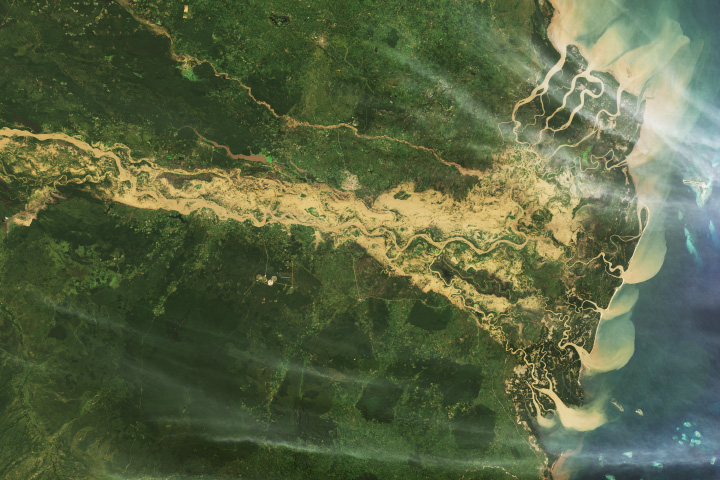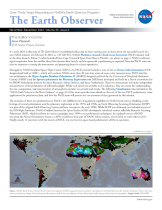- Home
- Missions
- Data
- Communications
- People
- The Earth Observer Newsletter




Recent Imagery
You will be directed to the NASA Visible Earth webpage when you select Images by Mission below, or click on the images at right that are randomly generated to represent four out of all possible topics.
The Earth Observer: Jul - Aug, 1996
In This Issue
Click title below to view page
SCIENCE TEAM MEETINGS
ASTER (Advanced Spaceborne Thermal Emission and Reflection Radiometer) Science Team Meeting .... 3
Moderate-Resolution Imaging Spectroradiometer (MODIS) Science Team Meeting ..... 7
EOS PM-1 Advanced Microwave Scanning Radiometer (AMSR) Science Team Meeting .... 11
ARTICLES
EOS Data Information System (EOSDIS) Panel Meeting ... 13
Physical Oceanography DAAC Users Working Group Meeting .... 16
Merging Over-the-Horizon Radar with Satellite Oceanographic Data ..... 18
The VEGETATION Programme .... 21
CEOS Global Mapping Task Team Executive Summary ... 24
An Overview of the Minority Universities-Space Interdisciplinary Network (MU-SPIN) Resources and Training Sites (NRTS) and a Selection of Their Earth System Science Activities ... 27
Ocean Winds and Ozone to be Measured by U.S. Instruments Aboard Japanese Earth Observation Satellite ... 29
Thematic Guide on The Use of Satellite Remote Sensing to Study the Human Dimensions of Global Environmental Change .... 30
ANNOUNCEMENTS
NASA's MTPE Earth Education Program .... 2
Kudos ..... 6
Earth System Science Pathfinder Announcement of Opportunity .... 12
Intelligence Satellite Photos Released .... 26
MTPE on trhe World Wide Web .... 28
What's New ...... 28
Science Calendar ..... 31
Global Change Calendar ..... 31
The Earth Observer Information/Inquiries ..... Backcover
Editor's Corner
Michael King—EOS Senior Project Scientist
A Payload Panel meeting was held in Annapolis, Maryland on July 29-31. Unlike previous Payload Panel meetings, this one was prompted by the desire to articulate and prioritize the strategic directions of Mission to Planet Earth in the upcoming years, rather than by some imminent budget reduction or program restructuring. The Payload Panel first articulated the fundamental principles that set EOS apart, and which we consider to be self-evident. These are:
(i) integrated, comprehensive observations - an observing strategy that combines spectral, temporal, and spatial measurements to maximize the scientific return;
(ii) long-term measurements - a strategy that resolves seasonal and interannual variability to improve the scientific understanding and provide a firm starting point for assessing decadal and longer changes (e.g., 15+ year data sets for global change research);
(iii) calibration and characterization - provide adequate pre-flight and on-orbit calibration for climate and global change research to enable intercomparisons of measurements from different instruments and platforms;
(iv) validation - an end-to-end assessment of data product quality;
Read more...

